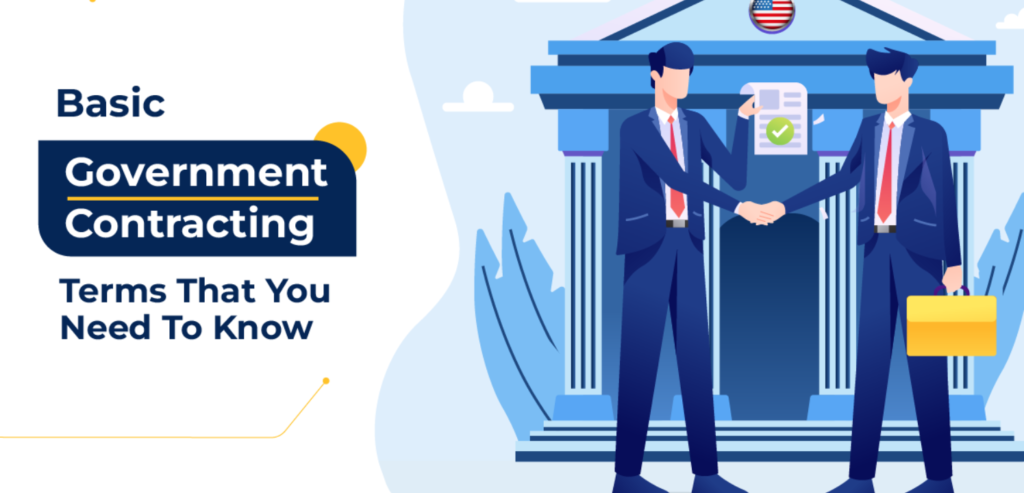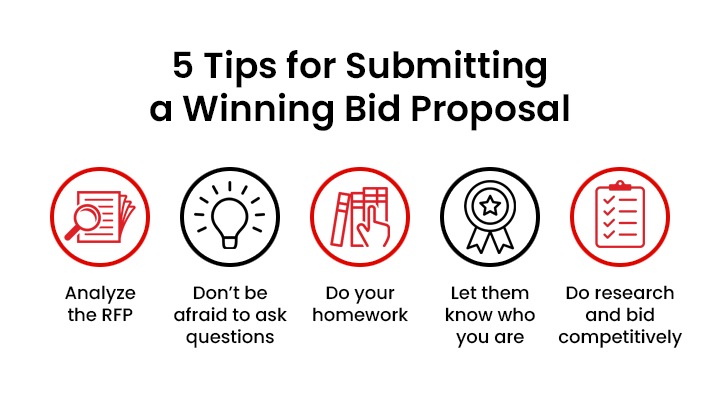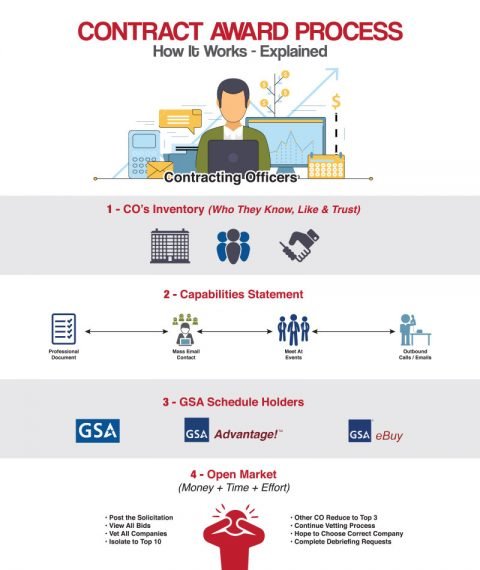🏛️ Are you ready to unlock the potential of government contracts for your business? The world of government contracting can seem like a maze, filled with complex procedures and unfamiliar terminology. But don’t let that intimidate you! With us, you can navigate this lucrative market and take your business to new heights.
Imagine securing a steady stream of high-value contracts that not only boost your revenue but also elevate your company’s reputation. 💼💰 That’s the power of government contracting. However, many businesses miss out on these opportunities simply because they don’t know where to start or how to navigate the process. From understanding the basics to crafting winning proposals, there’s a lot to learn – but the rewards are well worth the effort.
Imagine securing a steady stream of high-value contracts that not only boost your revenue but also elevate your company’s reputation. That’s the power of government contracting. However, many businesses miss out on these opportunities simply because they don’t know where to start or how to navigate the process. From understanding the basics to crafting winning proposals, there’s a lot to learn – but the rewards are well worth the effort.
In this comprehensive guide, we’ll walk you through every step of the government contracting process:
- Understanding Government Contracting
- Preparing Your Business
- Finding Opportunities
- Crafting A Winning Proposal
- Submitting Your Bid
- Post Award Process
- Compliance And Regulations
- Conclusion
We’ll demystify the jargon, highlight key preparation steps, show you how to find opportunities, and reveal the secrets to submitting bids that stand out. Plus, we’ll cover essential post-award processes and compliance requirements to ensure your success is long-lasting. Are you ready to embark on this journey and revolutionize your business? Let’s dive in and unlock the doors to government contracting success!

Understanding Government Contracting
A. Definition and importance
Government contracting refers to the process by which private businesses provide goods or services to government agencies through a formal agreement. This symbiotic relationship is crucial for both parties: it allows the government to access specialized expertise and resources, while offering businesses lucrative opportunities for growth and stability.
The importance of government contracting cannot be overstated:
- Economic impact: Government contracts contribute significantly to the national economy
- Innovation driver: Many technological advancements stem from government-funded projects
- Job creation: Contracts often lead to increased employment opportunities
- Diverse participation: Programs exist to support small businesses and disadvantaged groups
B. Key agencies and resources
Several agencies and resources play vital roles in the government contracting process:
| Agency/Resource | Function |
| Small Business Administration (SBA) | Provides support and resources for small businesses |
| General Services Administration (GSA) | Manages federal procurement and property management |
| Federal Procurement Data System (FPDS) | Offers a centralized database of government contract information |
| System for Award Management (SAM) | Serves as a registration portal for government contractors |
C. Types of government contracts
Government contracts come in various forms, each designed to address specific needs and risk allocation:
- Fixed-price contracts
- Firm fixed-price (FFP)
- Fixed-price with economic price adjustment (FPEPA)
- Cost-reimbursement contracts
- Cost-plus-fixed-fee (CPFF)
- Cost-plus-incentive-fee (CPIF)
- Time and materials contracts
- Indefinite delivery/indefinite quantity (IDIQ) contracts
Accordion title 1
Accordion title 2
Accordion title 3
Understanding these contract types is crucial for businesses to determine which opportunities align best with their capabilities and risk tolerance.
Now that we’ve covered the fundamentals of government contracting, let’s explore how to prepare your business for this competitive landscape.

Preparing Your Business
Now that you understand the basics of government contracting, it’s time to prepare your business for success in this competitive arena. This crucial step involves several key elements that will position your company as a strong contender for government contracts.
A. Building past performance
Past performance is a critical factor in winning government contracts. Federal agencies want to work with businesses that have a proven track record of success. To build your past performance:
- Start with smaller contracts or subcontracting opportunities
- Document all completed projects meticulously
- Collect testimonials and references from satisfied clients
- Highlight relevant experience in your private sector work
B. Developing a capability statement
A capability statement is your business’s resume for government contracting. This concise document should include:
| Section | Content |
| Core Competencies | List of your primary services or products |
| Past Performance | Brief overview of relevant projects |
| Differentiators | What sets your business apart from competitors |
| Company Data | DUNS number, CAGE code, NAICS codes, etc. |
C. Obtaining necessary certifications
Certifications can give your business a competitive edge and access to set-aside contracts. Some important certifications include:
- 8(a) Business Development Program
- Women-Owned Small Business (WOSB)
- Service-Disabled Veteran-Owned Small Business (SDVOSB)
- HUBZone Certification
D. Registering in the System for Award Management (SAM)
SAM registration is mandatory for all businesses seeking federal contracts. To register:
- Gather necessary information (DUNS number, TIN, CAGE code)
- Create a login.gov account
- Complete the SAM registration process
- Maintain and update your SAM profile annually
With these steps completed, your business will be well-prepared to compete for government contracts. Next, we’ll explore how to find and identify contracting opportunities that align with your business capabilities.
Finding Opportunities
Now that you’ve prepared your business for government contracting, it’s time to explore the various avenues for finding lucrative opportunities. This section will guide you through essential strategies to uncover potential contracts and position your business for success.
A. Networking and building relationships
Networking is crucial in the government contracting world. Attend industry events, conferences, and workshops to connect with:
- Government agency representatives
- Prime contractors
- Other small business owners
Building strong relationships can lead to valuable insights, partnerships, and potential subcontracting opportunities.
B. Utilizing small business programs
The federal government offers several programs designed to support small businesses in the contracting process:
| Program | Description | Benefits |
| 8(a) Business Development | For socially and economically disadvantaged small businesses | Access to set-aside contracts and mentorship |
| HUBZone | For businesses in historically underutilized business zones | Preferential consideration for federal contracts |
| Women-Owned Small Business (WOSB) | For businesses at least 51% owned by women | Access to contracts set aside for WOSBs |
| Service-Disabled Veteran-Owned Small Business (SDVOSB) | For businesses owned by service-disabled veterans | Access to set-aside and sole-source contracts |
C. Understanding solicitation types
Familiarize yourself with different types of government solicitations:
- Request for Proposal (RFP)
- Invitation for Bid (IFB)
- Request for Quotation (RFQ)
- Sources Sought Notice
Each type has its own requirements and evaluation criteria, so understanding the differences is crucial for crafting appropriate responses.
D. Navigating government websites
Several online resources can help you find contracting opportunities:
- SAM.gov: The primary source for federal contracting opportunities
- GSA Schedules: Long-term government-wide contracts with commercial firms
- Agency-specific websites: Many agencies post opportunities on their own sites
Regularly monitor these platforms and set up alerts to stay informed about relevant opportunities.
With these strategies in mind, you’ll be well-equipped to identify promising government contracting opportunities. Next, we’ll delve into the crucial process of crafting a winning proposal to increase your chances of securing contracts.

Crafting a Winning Proposal
Now that you’ve identified potential opportunities, it’s time to focus on creating a proposal that stands out. Crafting a winning proposal is crucial to securing government contracts and requires careful attention to detail.
A. Pricing strategies
Developing an effective pricing strategy is essential for a competitive bid. Consider the following approaches:
- Cost-plus pricing
- Fixed-price contracts
- Time and materials pricing
| Pricing Strategy | Pros | Cons |
| Cost-plus | Guaranteed profit margin | Less incentive for efficiency |
| Fixed-price | Predictable costs for government | Higher risk for contractor |
| Time and materials | Flexibility for complex projects | Requires detailed tracking |
B. Review and quality control
Implement a rigorous review process to ensure your proposal is error-free and compelling:
- Conduct multiple rounds of proofreading
- Use peer reviews to catch oversights
- Employ professional editors for final polishing
C. Compliance and formatting requirements
Adhering to strict government guidelines is non-negotiable:
- Follow all formatting instructions precisely
- Include all required forms and certifications
- Use the specified font, margins, and page limits
D. Addressing evaluation criteria
Carefully analyze the evaluation criteria and tailor your proposal accordingly:
- Create a compliance matrix
- Highlight your strengths in key areas
- Provide clear evidence of past performance
E. Analyzing the Request for Proposal (RFP)
A thorough understanding of the RFP is crucial:
- Identify all requirements and deliverables
- Note any ambiguities or areas needing clarification
- Develop a list of questions for the contracting officer
By meticulously addressing each aspect of the proposal process, you’ll significantly increase your chances of winning government contracts. Next, we’ll explore the crucial steps involved in submitting your bid and navigating the post-award process.

Submitting Your Bid
Now that you’ve crafted a compelling proposal, it’s time to focus on the crucial step of submitting your bid. This process requires attention to detail and a thorough understanding of the submission requirements.
Following up on your proposal
After submitting your proposal, it’s essential to follow up appropriately:
- Contact the contracting officer to confirm receipt
- Ask if any additional information is needed
- Inquire about the timeline for decision-making
Remember to maintain a professional demeanor and avoid being overly persistent.
Electronic vs. paper submissions
Government agencies increasingly prefer electronic submissions, but some still require paper copies. Here’s a comparison:
| Electronic Submissions | Paper Submissions |
| Faster delivery | Physical delivery required |
| Environmentally friendly | Higher printing costs |
| Easier to track | Risk of lost documents |
| May require specific file formats | Often require multiple copies |
Always check the solicitation for specific submission requirements.
Understanding submission deadlines
Meeting submission deadlines is critical in government contracting. Consider these key points:
- Deadlines are typically strict and non-negotiable
- Time zones matter – ensure you’re aware of the exact deadline in your local time
- Submit well before the deadline to avoid last-minute technical issues
- Some agencies use a “receipt by” deadline, while others use a “postmarked by” deadline
By carefully following these guidelines and paying close attention to the submission process, you’ll increase your chances of a successful bid. Next, we’ll explore what happens after you’ve submitted your proposal and how to navigate the post-award process.

Post-Award Process
Now that you’ve successfully secured a government contract, it’s crucial to understand the post-award process. This phase is critical for maintaining a positive relationship with the government and ensuring successful contract execution.
A. Managing contract modifications
Contract modifications are common in government contracting. They may involve changes in scope, timelines, or budget. Here’s how to handle them effectively:
- Stay proactive: Anticipate potential changes and communicate with the contracting officer
- Document everything: Keep detailed records of all modifications and related discussions
- Follow proper procedures: Adhere to the contract’s modification clause and government regulations
B. Invoicing and payment procedures
Timely and accurate invoicing is essential for maintaining cash flow. Follow these best practices:
- Familiarize yourself with the government’s invoicing system (e.g., WAWF, G-Invoicing)
- Submit invoices according to the contract’s schedule
- Include all required documentation and details
- Monitor payment status and follow up on any delays
| Invoice Element | Description | Importance |
| Contract Number | Unique identifier | Critical for tracking |
| CLIN/SLIN | Contract Line Item Number | Ensures proper allocation |
| Period of Performance | Dates covered by invoice | Prevents overlapping charges |
| Supporting Documentation | Proof of work completed | Validates charges |
C. Fulfilling contract requirements
Meeting contract obligations is crucial for maintaining a good reputation and securing future contracts. Consider these tips:
- Develop a detailed project plan
- Regularly review and update your progress
- Communicate proactively with the government point of contact
- Address any issues or delays promptly
D. Contract negotiations
Even after award, negotiations may be necessary for contract modifications or extensions. Prepare by:
- Reviewing the original contract terms thoroughly
- Gathering data to support your position
- Understanding the government’s perspective and priorities
- Being flexible and open to compromise
By mastering these aspects of the post-award process, you’ll be well-positioned to successfully execute your government contract and build a strong foundation for future opportunities. Next, we’ll explore the critical area of compliance and regulations in government contracting.

Compliance and Regulations
Navigating the complex landscape of government contracting requires a thorough understanding of compliance and regulations. This section will guide you through the key aspects of maintaining compliance in your government contracts.
Audits and Oversight
Government contractors are subject to regular audits and oversight to ensure transparency and accountability. Here’s what you need to know:
- Types of Audits:
- Financial audits
- Performance audits
- Compliance audits
- Preparing for Audits:
- Maintain accurate and detailed records
- Implement internal control systems
- Train staff on audit procedures
Cybersecurity Requirements
With increasing digital threats, cybersecurity has become a critical aspect of government contracting. Key points include:
- NIST SP 800-171: Compliance with these guidelines is often mandatory
- CMMC (Cybersecurity Maturity Model Certification): A tiered model for assessing cybersecurity readiness
| CMMC Level | Description | Typical Requirements |
| Level 1 | Basic Cyber Hygiene | 17 practices |
| Level 3 | Good Cyber Hygiene | 130 practices |
| Level 5 | Advanced/Progressive | 171 practices |
Labor and Employment Laws
Government contractors must adhere to specific labor and employment regulations:
- Service Contract Act (SCA): Sets wage rates and fringe benefits for service employees
- Davis-Bacon Act: Applies to construction contracts and sets prevailing wage rates
- Equal Employment Opportunity (EEO): Prohibits discrimination in employment practices
Federal Acquisition Regulation (FAR)
The FAR is the primary regulation for federal government procurement. Key aspects include:
- Contract types and pricing
- Competition requirements
- Socioeconomic programs
- Contract administration
Understanding these compliance and regulatory requirements is crucial for success in government contracting. With this knowledge, you’ll be better equipped to navigate the complexities of working with federal agencies and maintain long-term success in this field.
IN CONCLUSION:
Government contracting offers immense opportunities for businesses of all sizes, but it requires careful preparation and a thorough understanding of the process. From registering your business and obtaining necessary certifications to identifying suitable opportunities and crafting compelling proposals, each step is crucial for success in this competitive field. It’s essential to stay informed about compliance requirements and regulations to maintain a strong standing with government agencies.
As you embark on your government contracting journey, remember that persistence and attention to detail are key. Continuously refine your approach, learn from both successes and setbacks, and stay updated on industry trends. By following the steps outlined in this guide and leveraging available resources, you’ll be well-equipped to navigate the complexities of government contracting and unlock new growth opportunities for your business.